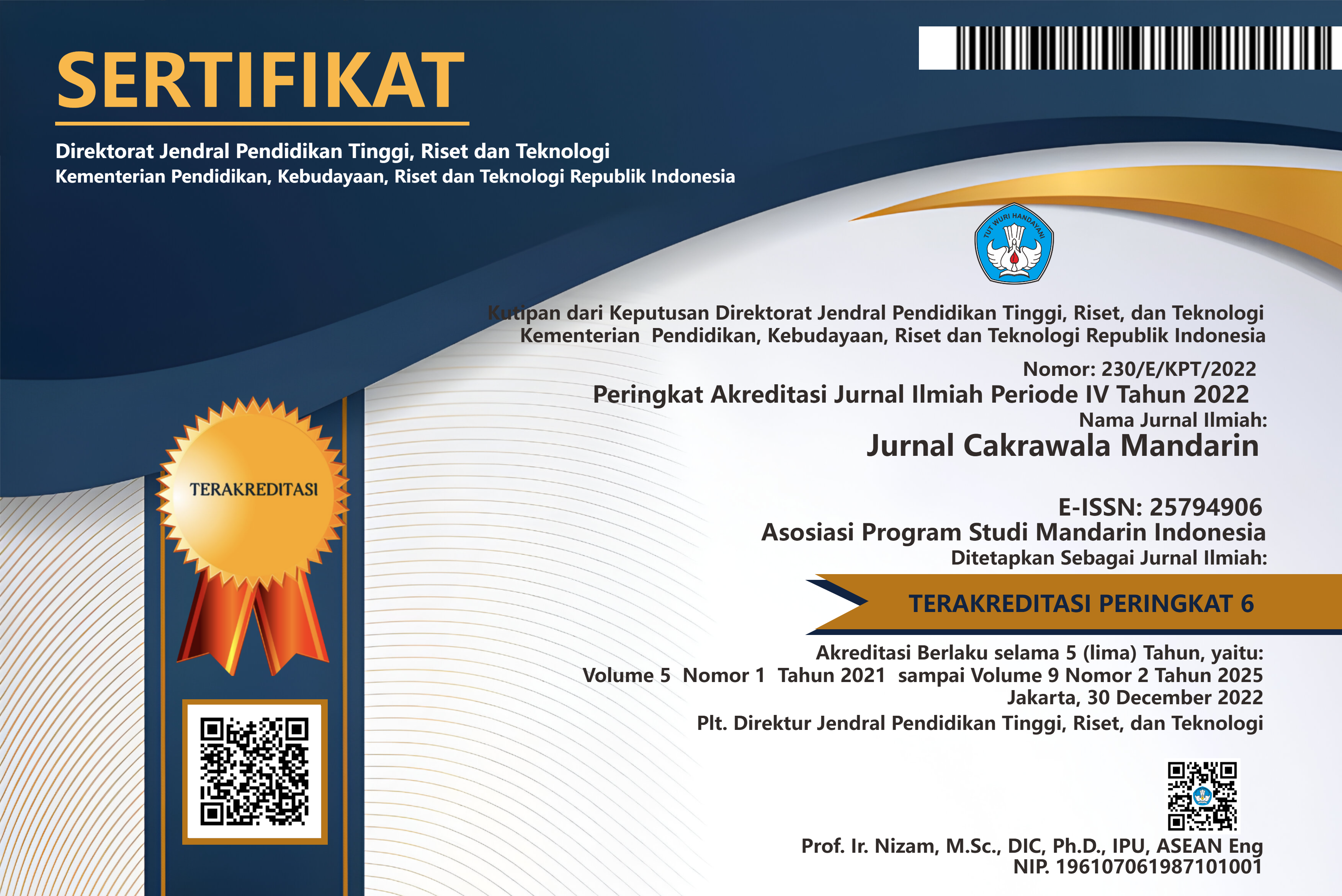Pelestarian Budaya Peranakan Tionghoa Wayang Potehi pada Masa Pandemi COVID-19
Abstract
The COVID-19 pandemic has not only dimmed economic activity, but also cultural activity. To keep cultural activities alive within the limitations of mobility, efforts have been made to keep the culture alive. In particular, this study describes the efforts taken in preserving the Chinese-Peranakan culture of wayang potehi by the Wayang Gubug Museum Mojokerto during the COVID-19 pandemic. This study was conducted by looking at the significance of the preservation of the Chinese culture of the Peranakans as one of the cultural treasures in Indonesia. This study uses a qualitative descriptive method to find out how the efforts to preserve wayang potehi by the Wayang Gubug Museum Mojokerto during the pandemic using functional structural theory. The study was conducted by means of field observations and in-depth interviews with a tour guide from the Gubug Wayang Museum and literature studies. Based on the results of the study, to preserve art and culture carried out by the Wayang Gubug Museum Mojokerto during the COVID-19 pandemic, 2 digitalization efforts were carried out by relying on social media platforms that were already available such as Youtube, Instagram, and Tiktok. This is done to reach a wider audience. As for the area around Mojokerto, the Gubug Wayang Museum also carries out limited educational programs to schools by complying strict health protocols.
Keywords: Preservation; Wayang Potehi; COVID-19 Pandemic
Full Text:
PDF (Bahasa Indonesia)References
Anggito, A., Setiawan, J. (2018). Metodologi penelitian kualitatif. CV Jejak (Jejak Publisher).
Jones, P., Bradbury, L., & LeBoutillier, S. (2011). Introducing social theory. Polity. (Pengantar Teori-Teori Sosial: Dari Fungsionalisme hingga Post-Modernisme). Diterjemahkan oleh Achmad Fedyani Saifuddin. Yayasan
Pustaka Obor Indonesia. Jakarta.
Kaplan, D., Manners, A. A. (1999). Teori budaya.
Natalia, Widayatmoko. (2019). Pelestarian Kebudayaan Peranakan Tionghoa Wayang Potehi melalui Media Digital. Koneksi. No.3. Vol.2. 480-483. https://www.researchgate.net/publication/333721937_Pelestarian_Kebudayaan_Peranakan_Tionghoa_Wayang_Potehi_melalui_Media_Digital (diakses pada 24 Mei 2022)
Suparno, A. (2017). Memaknai Kembali Tradisi Wayang Potehi. Litera, No.2. Vol.16:190. (diakses pada 2 Juni 2022)
Suprapto, H. (2017). Metode Penelitian untuk Karya Ilmiah. Yogyakarta: Gosyen Publishing
Wayang, Museum Gubug. (2018). Museum Gubug Wayang. Profil - Museum Gubug Wayang Mojokerto (gubug-wayang.com) (diakses pada 24 November 2021)
Widyani, T., Tjaturrini, D., & Sutanto, F. (2017). Wayang Potehi: Makna Ragam Hias Hewan pada Dekorasi Panggung Pertunjukan. PARAFRASE: Jurnal Kajian Kebahasaan & Kesastraan, No. 2. Vol. 17: 58. https://doi.org/10.30996/parafrase.v17i2.1371
DOI: http://dx.doi.org/10.36279/apsmi.v6i2.172
DOI (PDF (Bahasa Indonesia)): http://dx.doi.org/10.36279/apsmi.v6i2.172.g100
Refbacks
- There are currently no refbacks.
Alamat Redaksi: Tlp. +62778473399 - hermanuvers72@gmail.com E-ISSN 2579-4906 |  |




